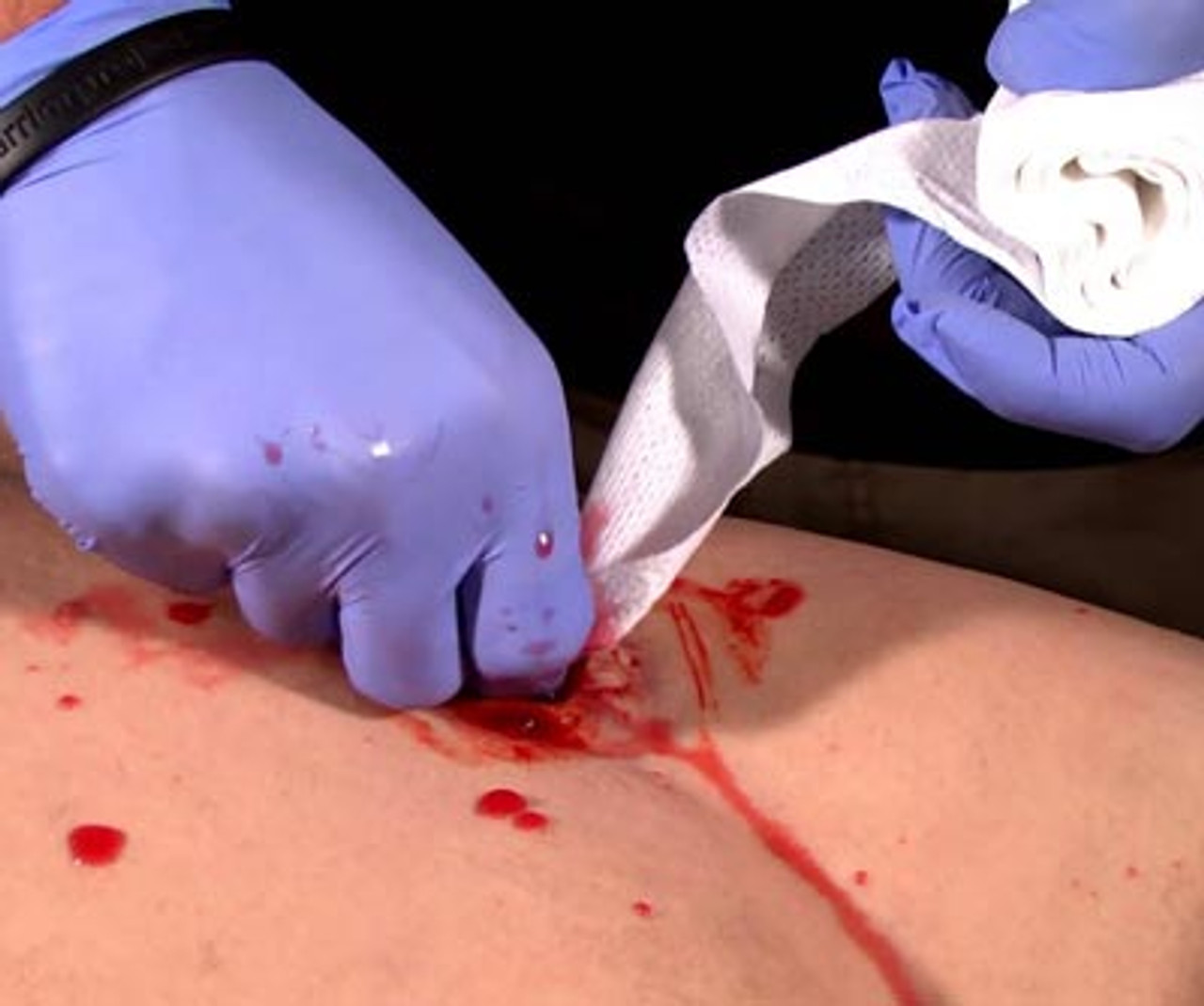You’re building a bleeding control kit. You’ve done the research and have covered the basics — picked out a tourniquet, selected a pressure bandage, compressed gauze, gloves and shears. You may have even taken a wound-packing or Bleeding Control course that taught you core techniques for controlling traumatic bleeding. But the question remains; “Should I add a hemostatic to my kit?”
And you might ask yourself “Why does this cost as much as everything else in the kit put together? What is the difference between the hemostatics, and are they worth it?”
The variety of available hemostatic agents reflects the fact that there are whole classes of products that use entirely different mechanisms to stem the flow of blood from traumatic injuries. Some promote the change of blood from a liquid to a gel by enhancing or accelerating the natural clotting process, some suppress the body’s natural means of “busting” clots, others interfere with blood flow through mechanical or chemical intervention.
When considering adding a hemostatic to your trauma kit, it’s useful to recall some guidelines developed in 2003, in concert with the United States Army Institute of Surgical Research (USAISR). These guidelines, which attempt to describe the perfect hemostatic agent for use in battlefield scenarios, advanced the following criteria:
- Ability to stop large-vessel arterial and venous bleeding within 2 minutes of application
- Ability to be delivered in the presence of blood
- Readiness for use with no requirement for on-scene mixing or pre-application preparation
- Ease of use by the wounded victim, a ‘buddy’ or a medic, with minimal training
- Being lightweight and durable
- Having a minimum 2-year shelf-life, in extreme environmental conditions, and
- Being safe to use with no risk of further injury to tissues or transmission of infection
There are several hemostatic products that come very close to meeting the USAISR description of a perfect hemostatic, and those are the ones that are most commonly included in Stop the Bleed kits. QuikClot Combat Gauze, Celox Gauze, Chito-SAM and Celox Rapid are all very effective. All usually have an expiration date that is five years from date of manufacture, are lightweight and ready to use, and pose little if any risk to the injured party.
QuikClot was the first hemostatic agent to be approved by the Committee on Tactical Combat Casualty Care (CoTCCC) in granular form. At that time, QuikClot used zeolite as its active ingredient. Since then it has evolved into a kaolin-based formula that is delivered on a gauze substrate, and is sold as “Combat Gauze” in both military and law enforcement versions. (Both zeolite and kaolin are components of clay—maybe that’s where the famous coach’s admonition “rub some dirt on it!” originated?)
The kaolin-based product is much preferred. The earlier granular form, while effective at stopping bleeding, generated so much heat that it damaged tissues and caused extreme pain. The current kaolin formula promotes coagulation by rapidly absorbing fluid and by activation of factor XII of the coagulation cascade.
Celox, Chito-SAM and Hemcon products are all based on chitosan, a polysaccharide chemical that occurs naturally in shellfish and in puffball mushrooms (used for centuries by Native Americans to mitigate bleeding). Chitosan operates mainly on principles of fluid absorption and electrostatic attraction of red blood cells, which concentrates natural clotting factors at the wound site . Chitosan forms a softer clot than kaolin, which can make it easier to remove from a wound without causing a re-bleed. It also can be easily metabolized, meaning that if some of it remains in a wound, it will not cause problems (its main metabolic by-product is glucosamine).There are some differences within this family of products—Chito-SAM is unique in that while resembling gauze, it is composed entirely of chitosan, while Celox and Hemcon products are delivered in chitosan-impregnated gauze substrates. Celox Rapid also includes a binding factor that helps keep the active ingredient concentrated at the site of the wound.
Conclusion
Modern hemostatic gauze products are extremely effective, especially when used in conjunction with standard wound-packing techniques. They are easy to carry, easy to apply and can save lives in situations where treatment times are limited or there more casualties than responders. The main drawback is the expense—regulatory and manufacturing considerations contribute to the high cost of these materials. It is our determination that in cases where the expense can be justified, hemostatic agents are a desirable addition to STB/B-CON kits.
That said, we consider hemostatic agents more of a luxury than an essential component. In addition to the higher cost, there are may be restrictions on use by un-certified personnel in some states. A 2017 report from the journal of Wilderness and Environmental Medicine indicates that clinical evidence for civilian application is quite scant:
“To date, many gaps remain in high-level evidence (ie, randomized prospective clinical studies) on the effectiveness of hemostatic agents/dressings in both military and civilian studies. The clinical evidence from past and present generations of TCCC-approved hemostatic agents/dressings comes from only 9 peer-reviewed military and civilian case reports and case series”
Some of those case series do show that QuikClot, Hemcon etc. are effective, even in civilian applications, so there is no question that these products can save lives, however, they are not a substitute for training. A person who is well practiced in wound-packing techniques is probably just as able (or more so) to stop a hemorrhagic bleed using inert materials as is an untrained person armed with hemostatic gauze.
We encourage anyone considering the addition of hemostatic agents to their own STB kit, to look into applicable local regulations prior to purchasing.
